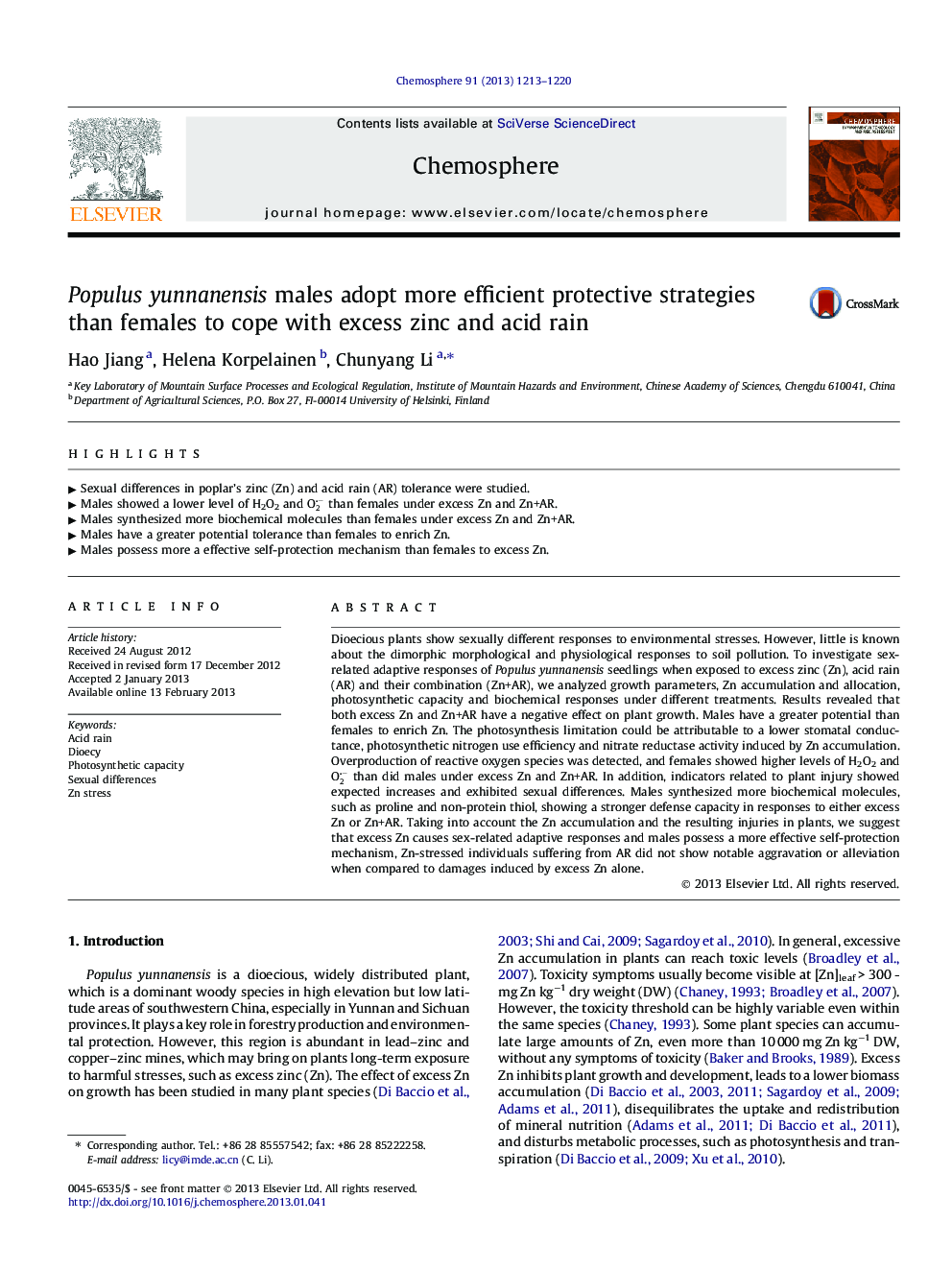| Article ID | Journal | Published Year | Pages | File Type |
|---|---|---|---|---|
| 4409539 | Chemosphere | 2013 | 8 Pages |
Dioecious plants show sexually different responses to environmental stresses. However, little is known about the dimorphic morphological and physiological responses to soil pollution. To investigate sex-related adaptive responses of Populus yunnanensis seedlings when exposed to excess zinc (Zn), acid rain (AR) and their combination (Zn+AR), we analyzed growth parameters, Zn accumulation and allocation, photosynthetic capacity and biochemical responses under different treatments. Results revealed that both excess Zn and Zn+AR have a negative effect on plant growth. Males have a greater potential than females to enrich Zn. The photosynthesis limitation could be attributable to a lower stomatal conductance, photosynthetic nitrogen use efficiency and nitrate reductase activity induced by Zn accumulation. Overproduction of reactive oxygen species was detected, and females showed higher levels of H2O2 and O2- than did males under excess Zn and Zn+AR. In addition, indicators related to plant injury showed expected increases and exhibited sexual differences. Males synthesized more biochemical molecules, such as proline and non-protein thiol, showing a stronger defense capacity in responses to either excess Zn or Zn+AR. Taking into account the Zn accumulation and the resulting injuries in plants, we suggest that excess Zn causes sex-related adaptive responses and males possess a more effective self-protection mechanism, Zn-stressed individuals suffering from AR did not show notable aggravation or alleviation when compared to damages induced by excess Zn alone.
► Sexual differences in poplar’s zinc (Zn) and acid rain (AR) tolerance were studied. ► Males showed a lower level of H2O2 and O2- than females under excess Zn and Zn+AR. ► Males synthesized more biochemical molecules than females under excess Zn and Zn+AR. ► Males have a greater potential tolerance than females to enrich Zn. ► Males possess more a effective self-protection mechanism than females to excess Zn.
